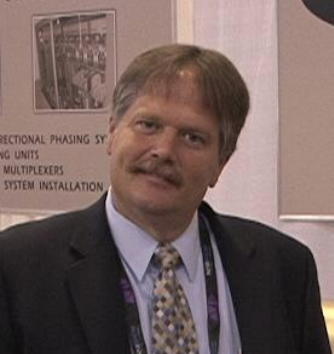DA Q&A : When Antenna Monitor Readings Go Strange Part 3 – Fixing the Problems

[December 2012] Do you maintain a directional antenna? This series is designed to help. If you have a question, send it on to Kurt at the email address below.
A major part of fixing problems with directional systems is knowing where the problem actually is located.
Although the pressure is to get back on the air, the goal should be to solve the problem, not the symptoms. Making changes to parts that are not broken (by turning the cranks, for example) will not only not fix the problem, but will eventually lead you to worse issues down the road.
A good illustration might be where a component failure ends up being reflected in a changed Common Point load. In recent years, this could cause some stations to experience a situation where the main transmitter, a solid state model, will not run full power – or even 10% power – due to a change in the system load.
Upon switching to that old, reliable tube auxiliary transmitter, the system appears to be back up at full power, but the results could end up being very ugly.
Why?
Moving the Problem Around
Consider for a moment, just where is that power going?
It is feeding the same unbalanced load that the main could not handle.
Here is how easy this situation can happen – and it might have been set in motion long before you came on board: if a capacitor has started leaking, changed value, or even exploded, the system load has likely changed.
A Bad Idea
As mentioned in Part 1, the first impulse some folks might have would be to turn the cranks until achieving the station’s nominal parameters.
But this creates one of two very bad situations.
First, the stress on the bad component may not have been relieved. In fact, it might be stressing it even further, and secondly when you unbalance a system, other components may become over-stressed and fail.
Meanwhile many older generation transmitters can run for hours into a dead short and never complain. If a part of the system has gone open, the power may be diverted to places where the circuit components are not rated highly enough for the increased current.
The circulating currents, perhaps in a part of the circuit nowhere new the original failure now may be high enough power to burn up lighter components. Then you have even more damage – or worse, a fire.
In the worst case scenario, you get back on the air with – seemingly – full power and run for a few days (hours?). Eventually another component “pops,” and then you really are off-the-air for a while.
Instead, the more effective solution to a system problem is to replace the failed component(s).
Replacement
Among the quickest and easiest repairs are those where you can see catastrophic failure: an exploded capacitor, a burned coil, or burned contacts in the contactors.
Ideally, you will have a spares for each key component on hand. If so, dropping in an exact replacement often will bring your antenna monitor right back to normal parameters. That is a quick, easy, and economical, especially considering your time.
If you do not have enough budget to have exact spares for each value of component, you might be able to stock several parts that can be used separately or combined to replace a larger item. Still, do not be too tight or you might find yourself with two places needing the same part.
Simple Replacements
Changing directional pattern while under power can cause arcing which may destroy contacts in one or more of the contactors. This is easy to check and replace as soon as discovered.
Last time we talked about visually inspecting the various components. But what do you do with a leaking capacitor or burned coil?
Often is it possible to use the straps to bypass a bad section of a coil and continue to use the coil without changing the network. But if too much of the coil is burned or warped, it is much better to replace them as soon as possible.
Getting back on the air as quickly as possible is crucial. However, any repairs made should last. So, as noted, do not run for a lengthy period on under-rated components.
Know Your System
The more familiar you are with your directional antenna, and the schematics of your phasor and ATU boxes, the easier it is to know what to stock and zero in any problems causing trouble.
In fact, it would be a good idea to spend a little time with your consultant and phasor manufacturer, asking questions.
Ensure you have a complete parts list, understand what currents are present in the various branches of the system, and periodically check the components under load during maintenance visits. (An infrared thermometer is helpful in watching for unusual hot spots.)
Doing things this way will help you be sure that someone has not, during an emergency, replaced a key component with the right value, but wrong size (or wrong value, right size), leaving you a future surprise.
When You Cannot See It
Among the causes of system failure that are not as easily seen are those caused by flooding.
When water enters a transmission facility, all sorts of problems can develop, immediately or over time.
Identifying water-based problems so you can effectively repair the system in the aftermath of a flood will be our topic for our next installment.
– – –
Kurt Gorman, President of Phasetek Inc., is a second generation engineer and phasor manufacturer.
If you have a question about direction-al antenna systems, you are invited to ask Kurt. His email is: kurtgorman1@earthlink.net
